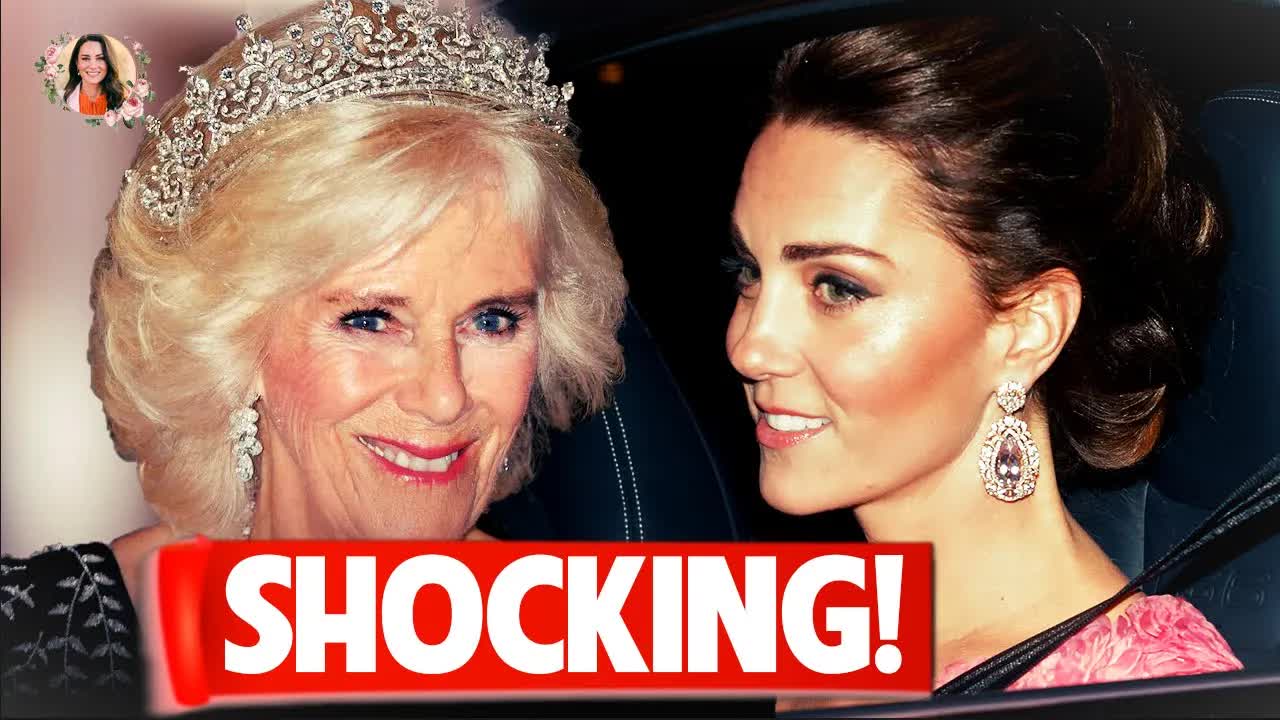Must Read
Behind the Velvet Rope: Unveiling Royal Etiquette and Secrets of the British Monarchy
The British royal family, cloaked in an air of mystery, operates under a strict set of rules that govern their public appearances and private lives.
At the heart of this regal tapestry is Princess Catherine of Wales, who, while embodying elegance and style, is also a devoted mother of three.
Balancing her royal duties with motherhood, she navigates a world filled with expectations that most can hardly imagine.
Royal traditions often come to light, revealing the intricate etiquette that members must adhere to.
A notable rule is that royals, including Queen Camilla and the princes, are forbidden from donning diamonds before the clock strikes six.
Micah Mayer, a royal etiquette expert, elaborated that during daylight hours, you're likely to see them adorned in pearls, sapphires, and other gemstones, reserving the sparkle of diamonds for evening events.
This guideline is rooted in the desire to maintain a modest appearance throughout the day.
When evening festivities commence, the rules evolve.
Women attending indoor events after 6 PM swap their hats for tiaras, which are traditionally reserved for married women.
A woman appearing without a tiara is signaling her single status, a subtle yet telling aspect of royal protocol.
As the Prince and Princess of Wales take on greater responsibilities, there's speculation about how they might redefine these long-standing customs.
Catherine and her sister-in-law have already begun to bend certain rules, particularly regarding the queen's preference for tights worn with dresses.
While the queen's directives have historically been rigid, the younger generation seems unafraid to challenge the norms.
Another enduring etiquette rule dictates that female royals must sit with their legs together—crossing at the knee is a no-go.
Instead, they may cross at the ankle, a small concession in the grand scheme of royal decorum.
Princess Diana was known for her clever tactics in navigating the media's gaze.
She would often clutch her handbag to her chest when exiting vehicles, a strategy designed to shield her from unwanted attention and ensure modesty.
This practice remains a guideline for all princesses, who must dress in a manner that avoids revealing too much skin.
Dinner parties within royal circles come with their own set of rules.
The queen initiates conversation with the guest on her right before switching to the left as the meal progresses.
If a royal needs to leave the table before finishing, they cross their utensils to signal to the staff that their plate should remain untouched.
If they've completed their meal, the utensils are placed at an angle, handles positioned at the bottom right of the plate.
Interestingly, members of the royal family are not permitted to engage in political voting.
Their position as influential figures necessitates a stance of neutrality, especially since the king serves as both head of state and the Church of England.
This detachment from politics underscores their unique role in British society.
Public displays of affection among royals are typically restrained, particularly during official engagements.
This practice is intended to respect cultural sensitivities, ensuring that visitors from more conservative backgrounds feel comfortable.
However, the former Duke and Duchess of Sussex often broke this mold, frequently seen sharing affectionate gestures, which drew both admiration and criticism.
Historically, the royal family faced restrictions on marrying Catholics, a rule that stood until 2011.
Weddings within the monarchy are grand events, steeped in tradition, with one peculiar requirement: the bridal bouquet must contain myrtle, a symbol of love and hope dating back to Princess Victoria.
In the past, royal heirs were never allowed to travel on the same aircraft due to safety concerns.
This precaution aimed to prevent the loss of multiple potential rulers in case of an accident.
Nowadays, it's common to see Prince William and his son George flying together, although this practice may change when George turns 12 in July 2025, following the precedent set by William's own experiences.
As a final note, every member of the royal family must always be prepared for the unexpected, including having appropriate attire ready for funerals.
This somber reminder of their responsibilities adds another layer to the already complex life of royalty, where every detail is meticulously managed, and appearances are everything.




















